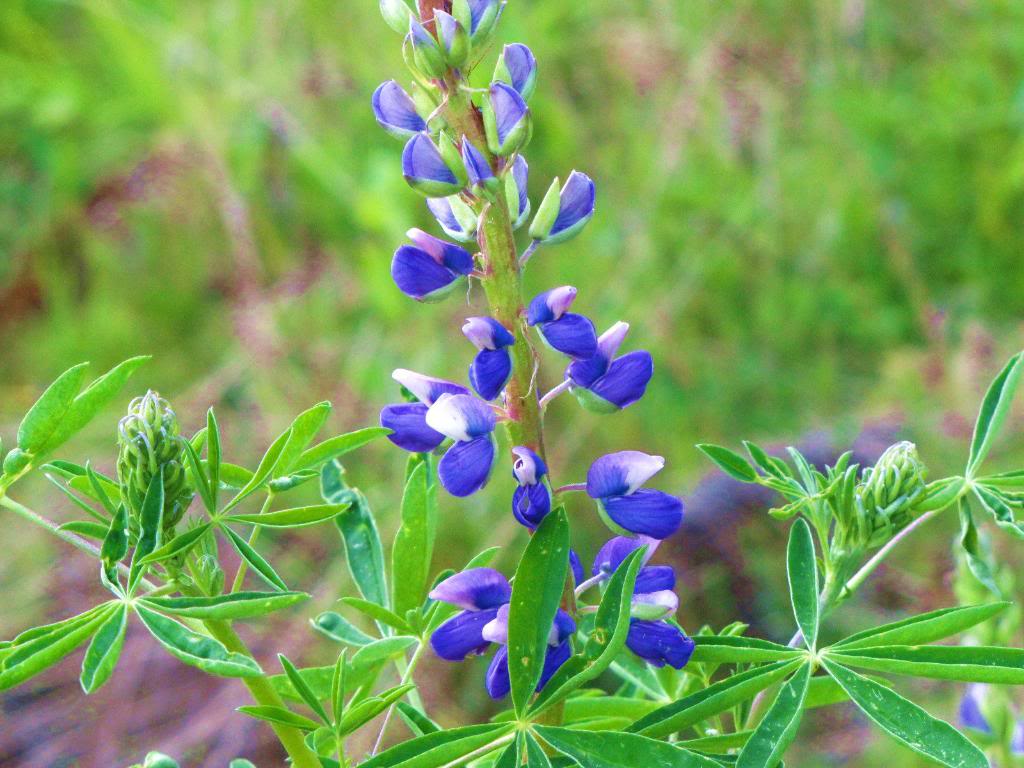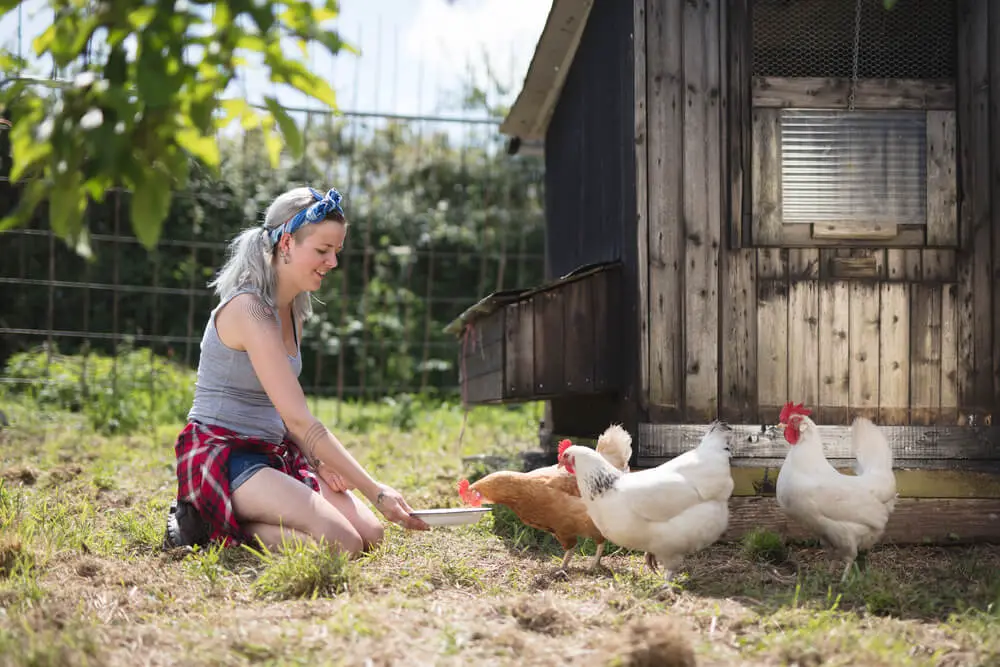Lupine, known for its vibrant flowers and nutrient-rich seeds, has piqued the interest of poultry keepers as a potential alternative feed for chickens. Its allure lies in the nutritional benefits it might offer to poultry, similar to other leguminous plants like soybeans. However, the suitability of lupine as a poultry feed has been a topic of debate due to certain concerns regarding its safety for chickens.
Key Takeaways:
- Lupine seeds can be a part of poultry diets, but certain precautions are necessary.
- There are three common types of lupine: white, blue (or narrow-leafed), and yellow.
- Lupine contains anti-nutritional factors, which can be detrimental if not properly managed.
- Adverse effects of lupine consumption in chickens include decreased growth rate and signs of toxicity in some cases.
- Proper processing of lupine seeds can mitigate adverse effects.
Types of Lupin
Common Varieties
Lupin comprises several species, but three are predominantly used in livestock diets:
- White Lupin (Lupinus albus): known for its high protein content
- Blue or Narrow-Leafed Lupin (Lupinus angustifolius): valued for its fiber content and lower alkaloid levels compared to other lupin species.
- Yellow Lupin (Lupinus luteus): Recognized for its nutritional content, particularly its higher cysteine content compared to other lupin species【source】.
These lupin varieties have been considered potential feed ingredients for livestock, including poultry, due to their nutritional profile which is somewhat comparable to that of soybeans.

Lupin Production
Lupin thrives in nutrient-poor acidic soils, which is why most of its production occurs in areas where other crops struggle to grow. Here are some facts regarding lupin production:
| Country | Percentage of World Lupin Production |
|---|---|
| Australia | 85% |
| United Kingdom | Not specified but significant |
| Canada | Not specified but significant |
Australia is the dominant producer of lupins, accounting for around 85% of world lupin production. The United Kingdom and western Canada also contribute significantly to lupin production.
Lupin in Poultry Diets
Nutritional Benefits
Lupin seeds can be a valuable addition to poultry diets due to their protein content and other nutritional benefits.
They offer an amino acid profile similar to that of peas and beans, with a protein digestibility of about 85%. The hull of the lupin seeds represents about 25% of the whole seed, and dehulling them increases the protein content and energy utilization.
Enzyme supplementation, particularly with pectinases, can further improve the utilization of non-starch polysaccharides present in lupin seeds.
Anti-Nutritional Factors
Despite the nutritional benefits, lupin seeds contain anti-nutritional factors like alkaloids, phytates, protease inhibitors, and lectins. These substances can pose challenges when including lupin in poultry diets:
- Alkaloids: Known to cause bitter taste and reduce palatability, leading to reduced feed intake.
- Phytates: Bind essential minerals, making them unavailable to the chickens.
- Protease Inhibitors: Interfere with protein digestion by inhibiting protease enzymes.
- Lectins: Can disrupt the digestive system by binding to the gut lining.
Mitigating the Risks
The adverse effects associated with these anti-nutritional factors can be mitigated through proper processing. For instance:
- Breeding for Low Alkaloid Content: The development of so-called sweet lupins with lower alkaloid content has shown promise. Sweet lupins can constitute up to 40% of broiler diets without adverse effects on growth, feed efficiency, or carcass characteristics.
- Dehulling: Removing the hull of lupin seeds can increase protein content and energy utilization.
- Enzyme Supplementation: Adding enzymes like pectinases can improve the digestibility of lupin seeds.
Adverse Effects of Lupin Consumption

Research has indicated some adverse effects associated with lupin consumption in chickens. A study conducted on broiler chickens revealed that diets containing lupin seeds led to decreased food intake and growth rate. Additionally, some birds showed signs of acute toxicity, particularly when fed raw lupin seed.
The initial clinical signs included leg weakness, lack of coordination, and torticollis. During the later stages, some birds exhibited muscle paralysis and skeletal deformity. (SOURCE)
Precautions and Recommendations
Processing Lupin Seeds
Proper processing of lupin seeds is crucial to mitigate the risks associated with the anti-nutritional factors present in them. Here are some processing methods and their benefits:
- Dehulling: As mentioned earlier, removing the hull increases the protein content and energy utilization of lupin seeds.
- Autoclaving: Subjecting lupin seeds to high-pressure steam can help in reducing the levels of anti-nutritional factors.
Recommended Levels of Inclusion
The level of lupin inclusion in poultry diets depends on the type of lupin and the species of poultry. For instance, sweet lupins can make up to 40% of broiler diets without any adverse effects on growth, feed efficiency, or carcass characteristics1.
Frequently Asked Questions
Can chickens eat lupin leaves?
It’s not advisable as lupin leaves, like seeds, may contain anti-nutritional factors that could be harmful to chickens.
What are the signs of lupin toxicity in chickens?
Some signs include decreased growth rate, leg weakness, lack of coordination, muscle paralysis, and skeletal deformity in severe cases.
How can lupin be safely included in poultry diets?
Through proper processing like dehulling and autoclaving, and by adhering to recommended levels of inclusion, lupin can be a safer option in poultry diets.
Conclusion
Exploring alternative feed options like lupin for poultry reflects the dynamic nature of modern agriculture, where sustainability and nutritional quality are paramount.
While lupin holds promise due to its nutritional profile, caution must be exercised to ensure the health and well-being of the poultry.
Proper processing of lupin seeds and adherence to recommended inclusion levels can mitigate risks, making lupin a viable alternative under controlled conditions. As with any dietary modification, consulting with animal nutrition experts and monitoring the health of the flock are crucial steps towards successful implementation of lupin in poultry diets.

Shannon Stansberry has been engaged in the business of raising chickens for more than 12 years. In 2016, she accomplished the Agriculture & Natural Resources program at Mt. San Antonio College. At present, she tends to more than 80 chickens on her 4-hectare farm. Shannon regularly shares her insights and experience on how to raise healthy and contented chickens on the platform Typesofchickens.com

